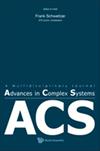比较测量步行性的方法
IF 1
4区 数学
Q4 MATHEMATICS, INTERDISCIPLINARY APPLICATIONS
引用次数: 3
摘要
由于经济、环境和健康的原因,可步行性分析越来越受到关注,但评估可步行性的方法尚未得到广泛的评价。本文描述了五种计算步行性评分的方法:半径内缓冲区、圆形缓冲区、路网节点缓冲区、路网边缘缓冲区和完全集成的网络方法。对未加权和各种加权版本进行分析,以捕捉对长距离步行的偏好程度。通过在东京市中心火车站的应用,对这些方法的准确性、相似性和算法性能进行了评估。完全集成的网络方法在最短的处理时间内产生最准确的结果,但需要大量的前期时间和资源投入。循环缓冲方法运行速度稍慢,但不需要任何网络信息,并且当适当加权时产生的步行性得分与集成网络方法非常相似。本文章由计算机程序翻译,如有差异,请以英文原文为准。
Comparing Methods for Measuring Walkability
Walkability analyses have gained increased attention for economic, environmental and health reasons, but the methods for assessing walkability have yet to be broadly evaluated. In this paper, five methods for calculating walkability scores are described: in-radius, circle buffers, road network node buffers, road network edge buffers and a fully integrated network approach. Unweighted and various weighted versions are analyzed to capture levels of preference for walking longer distances. The methods are evaluated via an application to train stations in central Tokyo in terms of accuracy, similarity and algorithm performance. The fully integrated network method produces the most accurate results in the shortest amount of processing time, but requires a large upfront investment of time and resources. The circle buffer method runs a bit slower, but does not require any network information and when properly weighted yields walkability scores very similar to the integrated network approach.
求助全文
通过发布文献求助,成功后即可免费获取论文全文。
去求助
来源期刊

Advances in Complex Systems
综合性期刊-数学跨学科应用
CiteScore
1.40
自引率
0.00%
发文量
121
审稿时长
6-12 weeks
期刊介绍:
Advances in Complex Systems aims to provide a unique medium of communication for multidisciplinary approaches, either empirical or theoretical, to the study of complex systems. The latter are seen as systems comprised of multiple interacting components, or agents. Nonlinear feedback processes, stochastic influences, specific conditions for the supply of energy, matter, or information may lead to the emergence of new system qualities on the macroscopic scale that cannot be reduced to the dynamics of the agents. Quantitative approaches to the dynamics of complex systems have to consider a broad range of concepts, from analytical tools, statistical methods and computer simulations to distributed problem solving, learning and adaptation. This is an interdisciplinary enterprise.
 求助内容:
求助内容: 应助结果提醒方式:
应助结果提醒方式:


